Events
Saga-ken 鳥栖市
I’m Chris Williams from the United States. I came to love Japan when I studied abroad in college. After returning to the United States, I came to Japan again and have been working in Japan for more than 8 years. I especially like history, so I went to Daikozenji Temple and Kiyama Shoten in Kiyama.
Kiyama Town, Saga Prefecture is located in the eastern part of Saga Prefecture. About 25 minutes (480 yen) by train from Hakata Station, you arrive at Kiyama Station and from there you can take a minibus to Daikozenji. The nearest bus stop is Komatsu, which only costs 100 yen from Kiyama Station.
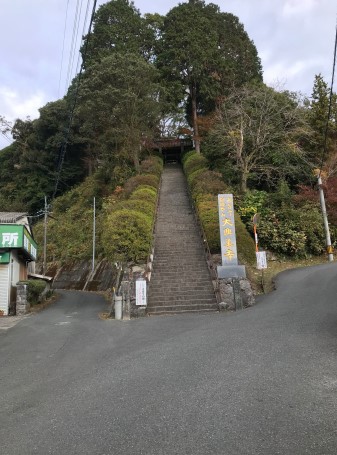
A 5-minute walk from the Komatsu bus stop, you walk along a path leading to stone steps (named Kibo no Saka, “Hill of Hope” in English) that take you to the entrance of Daikozenji Temple. Daikozenji Temple was founded in the Nara period (717 AD), and the famous monk Gyoki is said to have made the thatched rooftops of the temple, and carved a secret Buddha statue that is usually hidden from the general public.
After you climb the 127 stone steps, the temple grounds unfurl before you. The main hall of the temple has a thatched roof (called souan in Japanese) that was once commonly used for the roof of all temples, which is now very rare. It is a very valuable experience to see with your own eyes the living history remaining in the architecture.
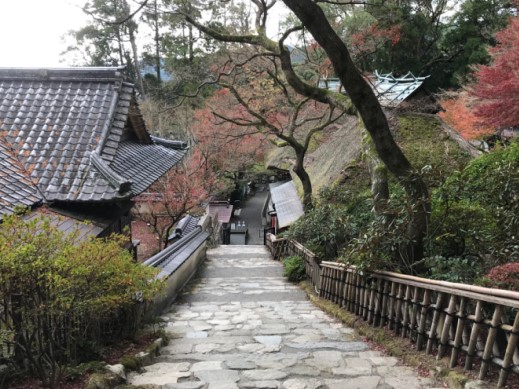
The right side is the main hall with a thatched roof (Souan), and the left side is a typical Japanese building using kawara roof tiles.

Inside view of the main hall
Azalea is a plant that is also a symbol of Kiyama Town, and Daikozenji is also famous for its azalea garden and the azaleas planted alongside the stone steps. The flowers are in full bloom from April to May, but in autumn the maple turns turn red surrounding Daikozenji in gorgeous colors.
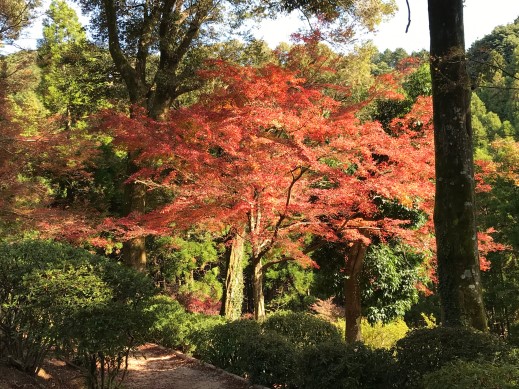
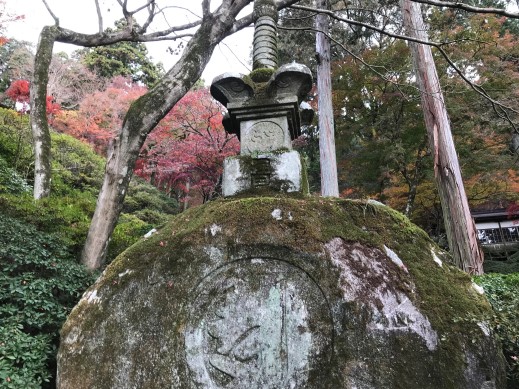
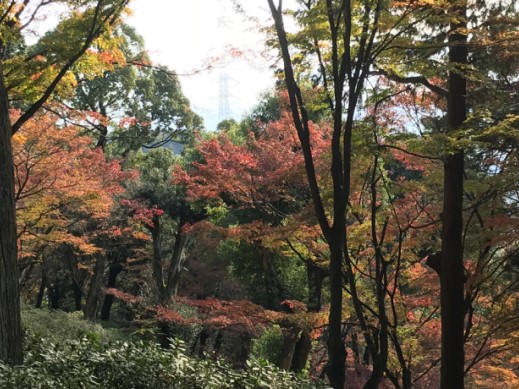
The Eleven-faced Kannon statue is usually hidden and can only be seen once every 12 years. The most recent unveiling was held in 2014, and the next time will be in 2026.
You can also climb the mountain to visit the Mt. Chigiriyama Kannon statue.

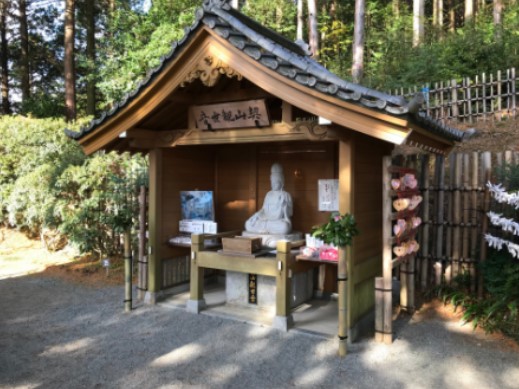
The statue of Chigiriyama Kannon was installed in 2008 and is a new addition to the temple garden, along with the shrine housing the statue which was completed a year later, but this Kannon has a long history. According to local legend, the name of the mountain refers to a wedding between the tree-planting and civil engineering god Isotakerunomikoto and a local girl, Sakonohime. This legend made Chigiriyama and Daikozenji famous as sacred places for lovers. Climbing the mountain can make you short of breath, but the autumn scenery is breathtaking in its own right.
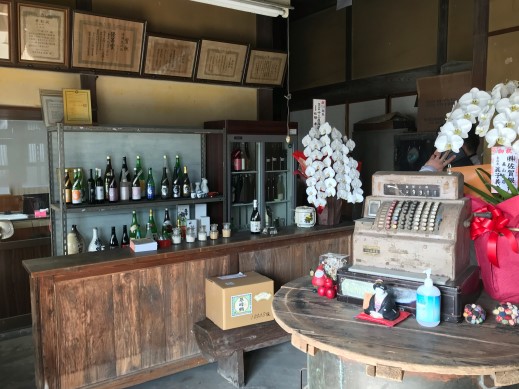
I returned to town from Daikozenji Temple and headed to Kiyama Shoten. The Kiyama Sake Brewery is located at Kiyama Shoten, a 5-minute walk from Kiyama Station. Kiyama Shoten was founded in 1920, but its history dates back to the Meiji era 140 years ago. The Saga Plain has been a granary area where rice production has been active since the Warring States period, and along with this, sake brewing also developed. Kiyama Shoten takes you back to the past of this wonderful sake brewing history.
In the past, it was common to drink sake alone, but in recent years it has become more enjoyable as a pairing for meals and snacks like wine, or as a drink in more formal settings.
At Kiyama Sake Brewery, I visited and learned about the sake brewing process. The sake manufacturing process was standardized in the Muromachi period about 600 years ago and is still in use today.
Yamada Nishiki, which is mainly used here, is considered to be the best rice for sake brewing. It starts out as brown rice, covered in bran, and if there is too much bran the flavor will be impaired, so it is necessary to refine it into white rice to make it sweeter. Up to 70% of the bran is removed to make sake with a clean and smooth taste.
After removing the rice bran, the white rice is washed and soaked in water to soften it. Then, the rice is put in a large rice cooker and steamed to cook the rice.
There is a koji room in the brewery, and the temperature is kept at a constant 34 degrees to store and produce the koji rice used in the fermentation process. The rice is inoculated with koji yeasts and left overnight, which is key to the fermentation process.

When you enter the fermentation room, you can smell the fresh melon-like new sake that is unbelievably only made with rice and koji!
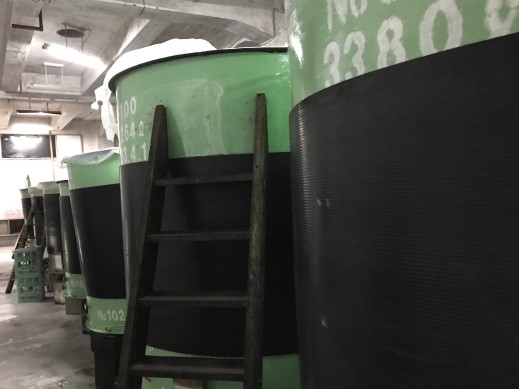
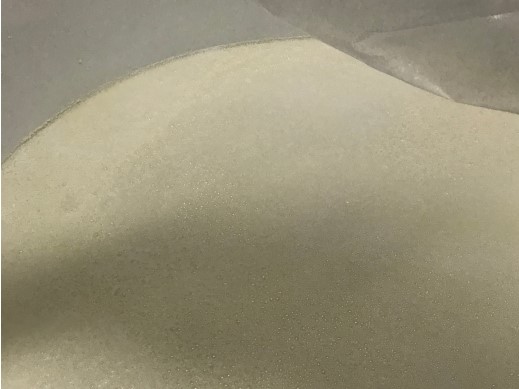
After this valuable experience at Kiyama Shoten, we stopped by a restaurant called Ichifuku on the way back to the station and enjoyed some of Saga’s local cuisine. I ordered a famous Saga dish called Sicilian Rice, which is rice topped with salad, grilled meat, onions, and mayonnaise. In addition, Kiyama is famous for Emu meat and Ichifuku is famous for serving Emu Kushiage (deep-fried emu on a stick). If you are interested in unusual foods, you have to try it out!
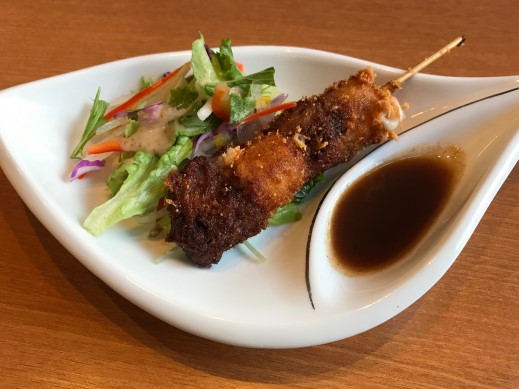
At Kiyama, we enjoyed the traditional architecture and beautiful nature of a temple founded in the Nara period and were able to experience the history of traditional people’s lives through a tour of a sake brewery. Why not visit Kiyama, just a 30-minute train ride from JR Hakata Station?
|
|
この記事が気に入ったら
いいね!しよう
|
|
|
